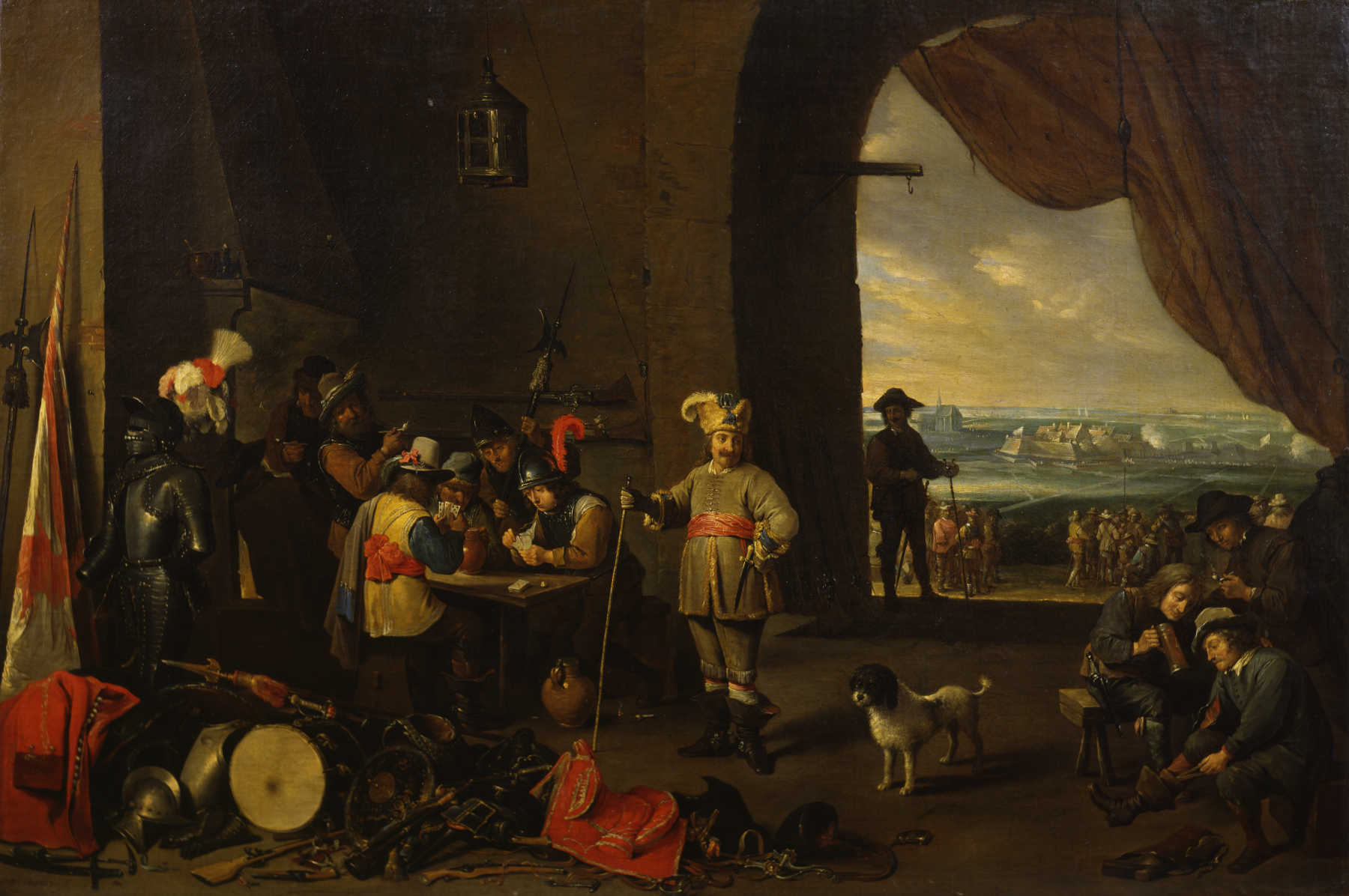The Guard Room
(Baroque Europe )
In the 1640s, at the end of the Thirty Years War (1618-48) pitting Protestants against Catholics, military life was a popular subject for art. Teniers represents a guard room, where soldiers passed their time between engagements. The armor and weapons on the floor or leaning against the wall are those of ordinary soldiers, not officers. The officer's clothing identifies him as from Poland or Hungary, both countries allied with the Habsburgs. David Teniers the Younger was a prolific painter of everyday life, focusing on those aspects most calculated to intrigue his wealthy clients, thus the lives of peasants and also that of soldiers. The careful attention given here to the armor, seemingly discarded in a pile by soldiers eager to relax, is characteristic of his methods and style. The precison of this passage is set off by the more painterly manner of the rest of the scene. Teniers was attached to the Habsburg court in Brussels (in present day Belgium) and the Habsburg rulers were Teniers' most important clients. .
What is probably the primary version of this composition, signed and dated 1642, is in The Hermitage Museum, St. Petersburg.
Provenance
Provenance (from the French provenir, 'to come from/forth') is the chronology of the ownership, custody, or location of a historical object.
Henry Walters, New York [date and mode of acquisition unknown]; Sadie Jones (Mrs. Henry Walters), New York, 1931, by inheritance; Mrs. Henry Walters Sale, Parke-Bernet, New York, May 1, 1941, lot 1187; Walters Art Museum, 1941, by purchase.
Exhibitions
| 1971-1972 | World of Wonder. The Walters Art Gallery, Baltimore. |
Conservation
| Date | Description | Narrative |
|---|---|---|
| 6/1/1948 | Treatment | loss compensation; other |
| 1/15/1993 | Examination | examined for condition |
| 3/9/2011 | Examination | examined for condition |
Geographies
Belgium, Antwerp (Place of Origin)
Measurements
H: 27 7/16 x W: 41 1/4 in. (69.7 x 104.8 cm)
Credit Line
Museum purchase [formerly part of the Walters Collection], 1941
Location in Museum
Accession Number
In libraries, galleries, museums, and archives, an accession number is a unique identifier assigned to each object in the collection.
In libraries, galleries, museums, and archives, an accession number is a unique identifier assigned to each object in the collection.
37.1692


